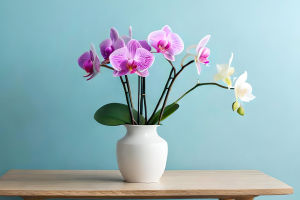Caring for indoor plants can be both rewarding and relaxing, but it can also seem a bit overwhelming when you're just starting out.
With the right approach, though, it’s easy to help your plants thrive. Let’s dive into the essential tips for beginners to make your plant care routine a breeze.
Watering: The Key to Happy Plants
A frequent challenge for new plant owners is figuring out the right amount of water. Giving your plants too much or too little water is a common issue. To avoid this, check the soil regularly. Stick your finger about an inch into the soil—if it feels dry, go ahead and water the plant. If it still feels moist, hold off for a day or two. This simple check can save your plants from the dangers of overwatering or drying out.
10 MUST-do's for your New Plants! | Plant Care 101
Video by 10 That Foliage Life
Lighting: Finding the Right Spot
Light is another critical factor in keeping your plants healthy. Most indoor plants require indirect sunlight, but not all homes offer the same amount of light. If your living space doesn’t get much natural sunlight, using specialized grow lights is a great way to supplement and ensure your plants still get what they need to grow. Positioning plants near windows or using reflective surfaces can also help maximize the available light.
Soil: The Foundation of Growth
Choosing the right soil is just as important as watering and lighting. Each plant has its own preference when it comes to soil type, so make sure you’re using the correct one for each plant species. It’s a good idea to repot your plants once a year, which refreshes the soil and allows the roots more room to expand. This simple step helps your plants get the nutrients they need to grow strong and healthy.
Temperature and Humidity: Creating the Perfect Environment
Most indoor plants thrive in a stable environment, so try to maintain a consistent temperature and humidity level in your home. Many plants prefer a temperature range between 65°F and 75°F. Be cautious of placing plants near heaters, air conditioners, or drafty windows, as sudden temperature changes can stress them. If your home tends to be dry, consider misting your plants or using a humidifier to keep the air moist enough for their liking.
Fertilizing: Giving Plants a Nutrient Boost
While regular soil provides essential nutrients, adding fertilizer every now and then can give your plants an extra boost, especially during their growing season. Be sure to use the correct type of fertilizer for each plant and follow the recommended application guidelines.
Pruning and Cleaning: Keep Your Plants Looking Their Best
Pruning your plants not only keeps them looking neat but also encourages new growth. Remove any yellowing or dead leaves to give the plant more energy for healthy leaves and stems. Additionally, regularly wipe the dust off the leaves, as dust can block sunlight and slow down the plant’s ability to photosynthesize.


